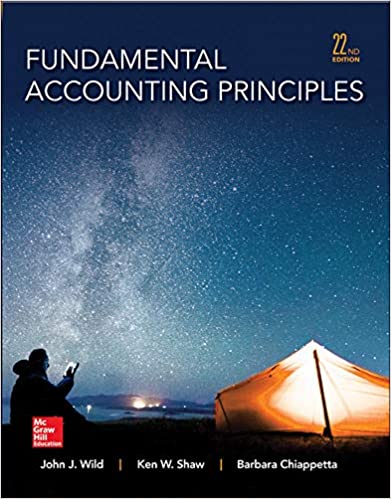
Fundamental Accounting Principles 22th Edition by John Wild ,Ken Shaw,Barbara Chiappetta
Edition 22ISBN: 978-0077862275
Fundamental Accounting Principles 22th Edition by John Wild ,Ken Shaw,Barbara Chiappetta
Edition 22ISBN: 978-0077862275 Exercise 1
Aikman Company has an opportunity to invest in one of two projects. Project A requires a $240,000 investment for new machinery with a four-year life and no salvage value. Project B also requires a $240,000 investment for new machinery with a three-year life and no salvage value. The two projects yield the following predicted annual results. The company uses straight-line depreciation, and cash flows occur evenly throughout each year.

Required
1. Compute each project's annual expected net cash flows. (Round net cash flows to the nearest dollar.)
2. Determine each project's payback period. (Round the payback period to two decimals.)
3. Compute each project's accounting rate of return. (Round the percentage return to one decimal.)
4. Determine each project's net present value using 8% as the discount rate. For part 4 only, assume that cash flows occur at each year-end. (Round net present values to the nearest dollar.)
Analysis Component
5. Identify the project you would recommend to management and explain your choice.

Required
1. Compute each project's annual expected net cash flows. (Round net cash flows to the nearest dollar.)
2. Determine each project's payback period. (Round the payback period to two decimals.)
3. Compute each project's accounting rate of return. (Round the percentage return to one decimal.)
4. Determine each project's net present value using 8% as the discount rate. For part 4 only, assume that cash flows occur at each year-end. (Round net present values to the nearest dollar.)
Analysis Component
5. Identify the project you would recommend to management and explain your choice.
Explanation
Project A:
It requires a $240,000 inves...
Fundamental Accounting Principles 22th Edition by John Wild ,Ken Shaw,Barbara Chiappetta
Why don’t you like this exercise?
Other Minimum 8 character and maximum 255 character
Character 255


